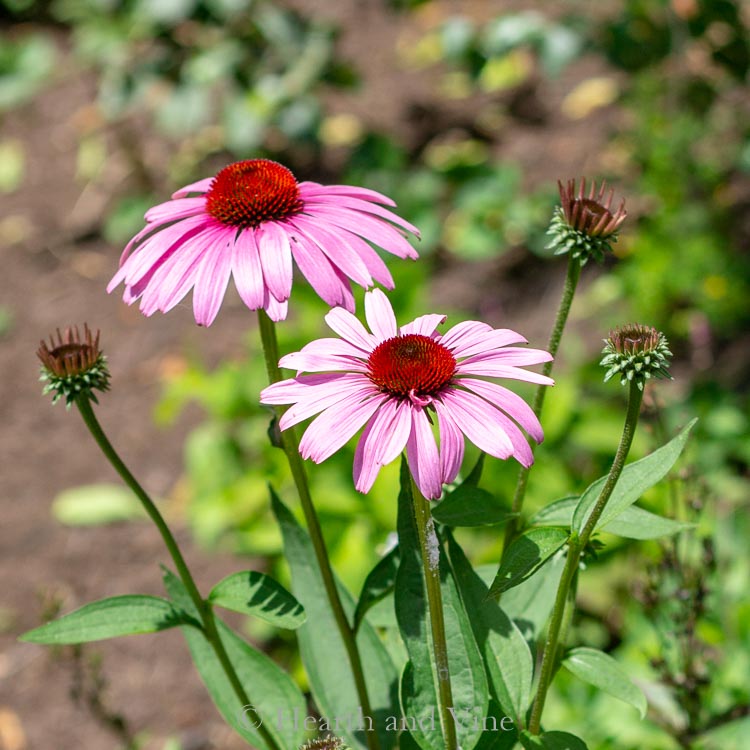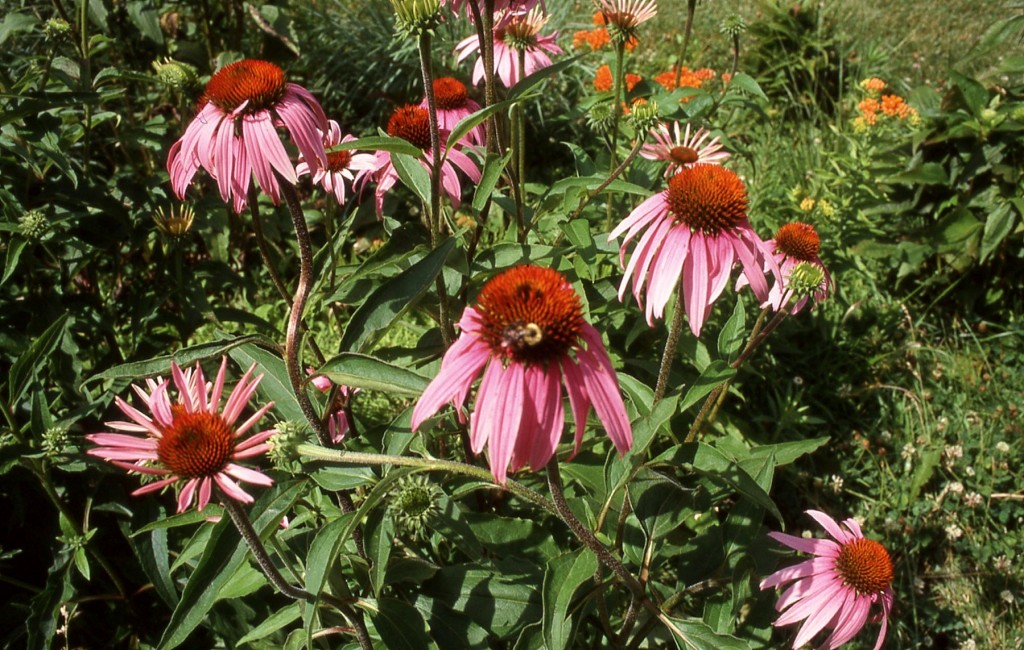

Prune the outermost plants to create shorter stiffer plants that serve as a living support for the taller ones. The purple flowers look great with orange blooms of butterfly weed, purple flowers of liatris and Russian sage.Ī bit more information: Pruning early in the season can help you add a new dimension to your purple coneflower display. Several pollinators are attracted to the flower. Many cultivars are available for varied sizes and colors.

It may grow 3 to 4 feet tall and produce pinkish-purple flowers that mature in early summer through mid-fall. Root cuttings can be taken in late autumn or early spring. Purple Coneflower is an herbaceous perennial in the Asteraceae (daisy) family that is native to central and eastern USA. Leave plants to form substantial clumps as they resent transplanting. Prairie dropseed, switchgrass, little bluestem and other native and ornamental grasses make nice partners. purple coneflower Magnus Magnus is a perennial with narrowly oval leaves and flowerheads to 10cm wide, with drooping deep pink rays and an orange-brown central cone. Purple coneflower combines nicely with a wide variety of native and non-native plants. Plants get stressed when they’re moved in late morning or afternoon, so it’s best to wait until early evening. Aside from the season, there’s also the matter of picking the right time of the day to transplant coneflowers. It is adaptable and can be grown in clay and drier conditions. They come in a wide variety of bloom colors, ranging from purple to pink, red, yellow, and even orange or white.
#Transplanting purple coneflower full
Hardy in zones 4 to 8, it prefers full to part sun and fertile loamy soil. Cut plants back halfway early in the season to encourage more compact growth and to delay flowering. You can bury the container in a hole in the ground or build up mulch around it for added winter protection. Coneflowers are hardy in USDA zones 3-9, which means they should be hardy in containers down to zone 5. Place the container in an area that receives full sun. Plant coneflowers about 1 to 3 feet apart, depending on the mature size of the variety. If dividing or transplanting coneflowers, do so in the spring or fall. Purple daisy like flowers top 3 to 4 feet tall plants for several months from mid to late summer and often into fall. Feed your container grown coneflowers with a 10-10-10 fertilizer. purpurea) is most common, but up to 9 naturally occurring echinacea can be found in purple shades or yellow.

The plants will tolerate partial shade, but may eventually flop over, and the blooms wont be as prolific. To view this video please enable JavaScript, and consider upgrading to a web browser thatĪ favorite food source for birds in winter, butterflies, bees and hummingbirds in summer, the native purple coneflower has found its way into home gardens. To get the most blooms (and the sturdiest plants), plant your purple coneflowers in a spot that gets at least six to eight hours of full sunlight each day.


 0 kommentar(er)
0 kommentar(er)
